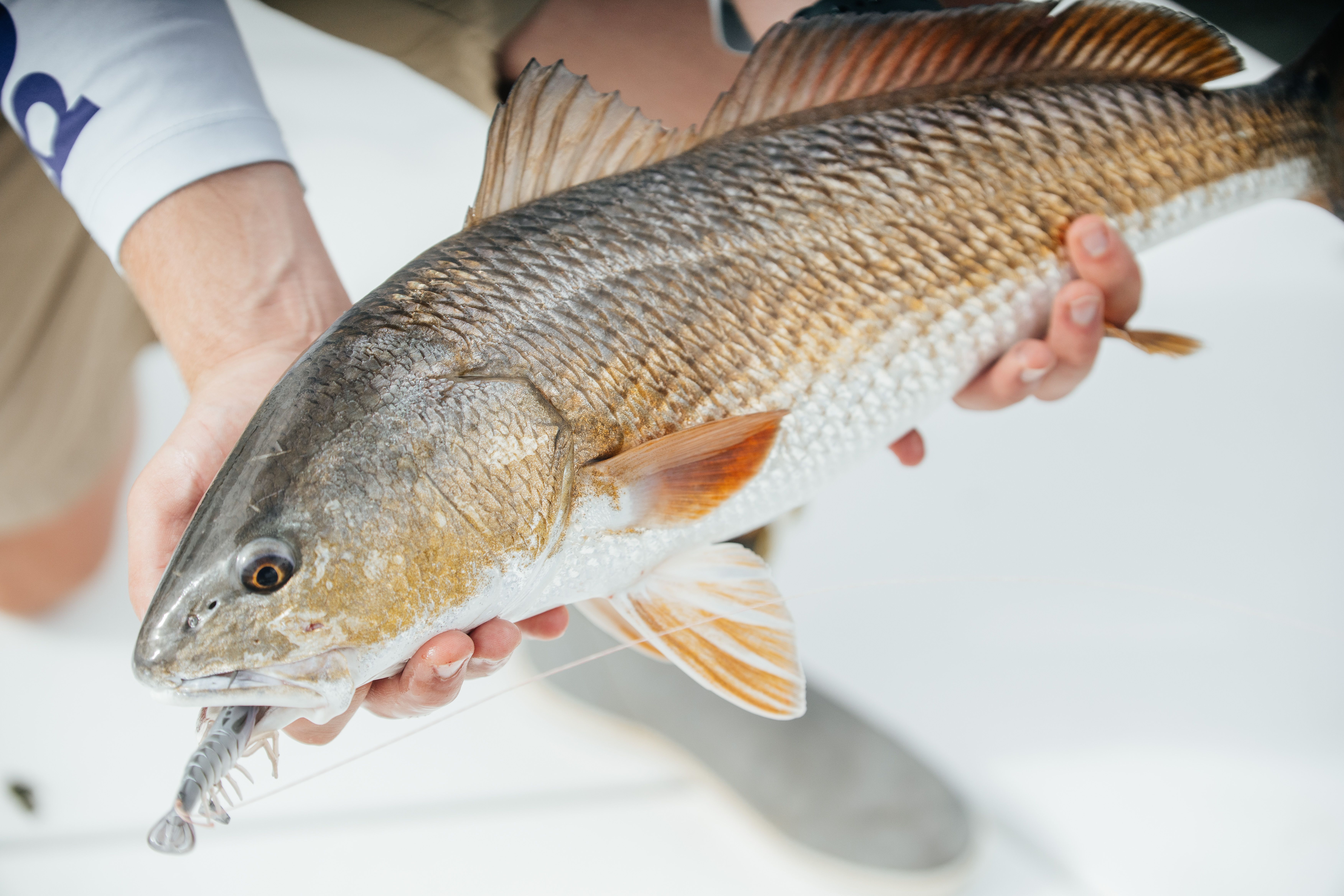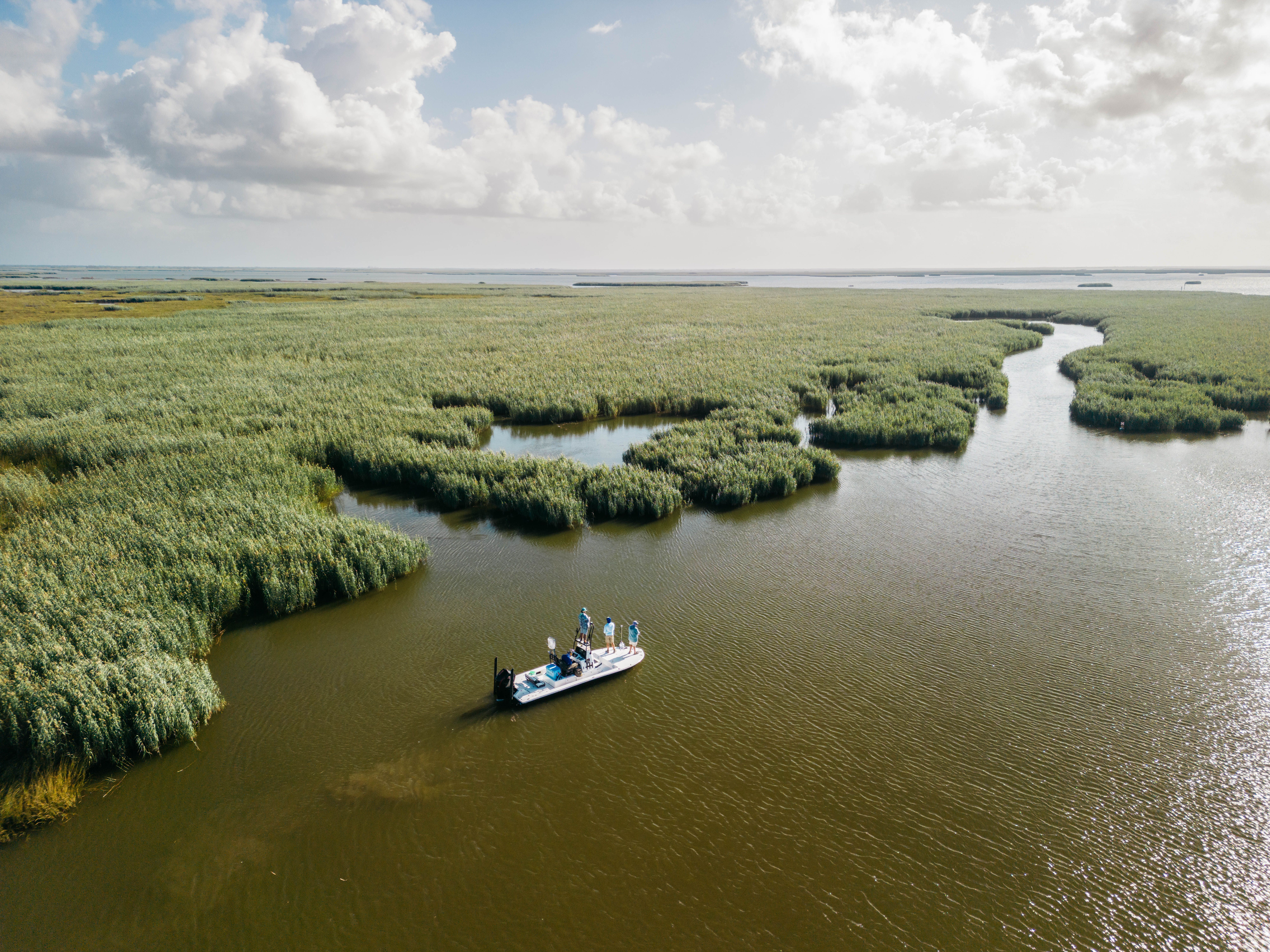Why You Need a Popping Cork For Redfish

Redfish are versatile feeders that find their meals from the mud to the surface. As such, they’re remarkably efficient at catching anything from shrimp and crabs, to various baitfish. Tapping into the red’s indiscriminate feeding habits means diversifying your baits and presentations. Bait sizes and colors will vary by region, but across the board, one of the most helpful tools for redfish pursuits is the popping cork rig.
In its simplest form, a cone-shaped cork with a concave top slips onto the leader via a slit in the side. A removable inner peg allows for adjustable positioning. Some of these “slip corks” include weighted bases for casting distance, but shallow water stealth missions typically forego the heavier corks.
A more popular option comprises a wire stem with a sliding float — cigar-shaped, oval, or cone-style — flanked by noise-making beads. Stems include top and bottom tie-off points for main line and leader. Adjusting leader length determines where the bait sits in the water column.
The benefit of a popping or “clacking” cork rig is pure fish-calling appeal. When you tug the rig, the cork chugs across the surface, while the stem-based rig also produces clacking noises. With each, the surface commotion mimics fleeing baitfish and feeding predators — two things that’ll get a red’s attention.
When an interested fish comes to investigate the enticing sounds, they’ll find the vulnerable bait hanging below.

Bait Options
Live bait such as sardines, pinfish, shrimp, and juvenile menhaden rigged on a Mustad Hoodlum hook work well under a popping cork when you’re targeting particular areas.
For covering water with multiple casts, go with artificials. Top options include the LIVETARGET Rigged Shrimp, the LIVETARGET Sunfish Swimbait, or your favorite soft plastic bait — paddletail, small swimbait, or jerkbait — on a Mustad Inshore Darter jig head. A 20-pound TUFLINE XD Fluorocarbon leader usually does the trick, but you’ll want to upsize to 30- or 40-pound for giant bull reds.
Compared to live baits, plastic and metal can handle more vigorous action, so don’t hesitate to vigorously chug that cork. Vary the cadence and leave plenty of pause time between tugs.
Additional Benefits
Holding a natural or artificial bait above rocks, oyster bars, or grass, while providing the option for fish-attracting commotion defines the venerable cork rig’s main appeal. However, this innovative rig offers additional benefits.
In moving water, the cork rig allows you to easily present your bait in a natural and convincing manner. Whether it’s a creek, canal, bayou, or river, predators expect their meals to approach from a logical course, based on the tidal flow they feel every day. Similarly, over a broad flat, if you want to drift across a grass/sand transition or a patch of rock or shell — the cork rig does the job.
As for casting, a weighted cork or the heavier clacking cork rig certainly helps you launch a bait to distant fish that may be too wary to approach. Longer rods with a good blend of backbone and tip flexibility facilitate this objective.
Lastly, a cork rig makes a great strike detector. Often helpful for kids or anyone new to the sport, a high visibility color like chartreuse, red or bright orange stands out well, even on dimmer days. When that float disappears, set the hook and start reeling!